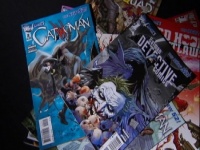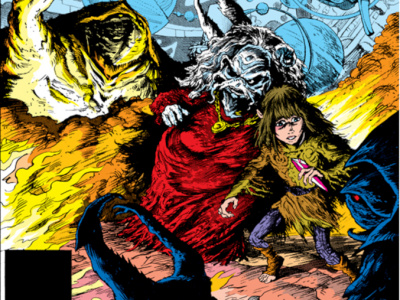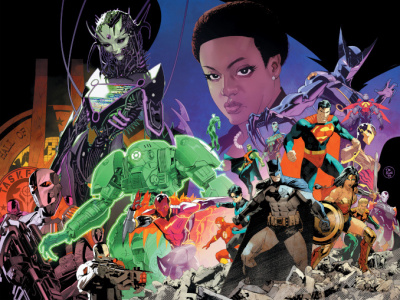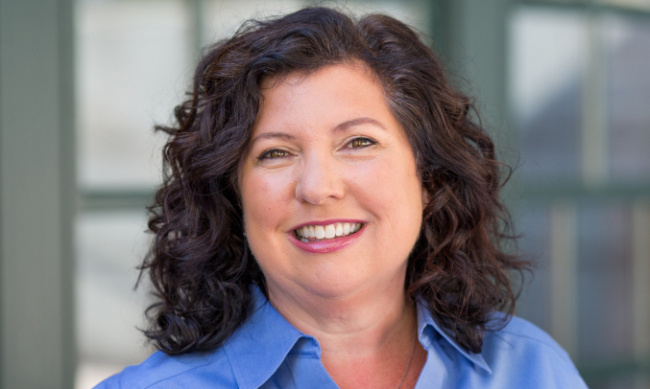
A news story on a local Fox TV affiliate in Washington, D.C. on Wednesday night called out DC Comics for the content of its books, introducing the story with the titillating lead-in, “Graphic violence and sex: that’s what you’ll find in the pages of DC Comics today.” The reporter then begins by dragging out the old shibboleth, “Most people think of comic books for kids,” and proceeds to focus on DC’s New 52 relaunch, making the (erroneous) point that the content of DC’s new books includes more sex and violence than the books they replaced. “Some of these superheroes would make Archie and Veronica blush,” the reporter says.
Two books targeted in the report were Red Hood and the Outlaws #1 and Catwoman #1, which did arouse some controversy when they were released (see “New 52 Controversies”). The report does note that DC comics are rated, but gives the impression that kids are still targeted as potential consumers, noting that some ads in the books seem directed at kids (we assume the ads were purchased as part of line-wide buys that hit readers of all ages).
Retailer Jared Smith of Big Planet Comics in Vienna, Virginia is interviewed, and he explained that he directs kids to appropriate content and away from content created for adults. He also points out that the trend toward more adult content is a relatively long term one.
The report also included interview snippets with Neil Bernstein, a psychologist and author of How to Keep Your Teenager Out of Trouble, who played along with the idea that the comics were directed at children and were bad for them.
The statement that “psychologists point out that overexposure to sex and violence for young children can encourage aggression” is also presented without attribution, and without distinguishing between real sex and violence and fantasy pictures in a publication (which most scientists would say have not been demonstrated to cause aggressive behavior).
Since it had been carefully explained to the reporter that the comics labeled as for older teens were not appropriate for younger kids, she immediately headed to a middle school to show comics with sexual and violent content to the students there to film their reactions, which varied. But the kids did not seem traumatized or display any aggression toward the reporter after looking at the comics.
We’ve seen no evidence that DC markets its comics, even the ones directed to them, to kids at all. In fact, DC Executive Vice President John Rood told ICv2 that its ads for the New 52 were directed at adults. “Our buying demo was adults 18-34,” he said (see “Inside the New 52”).
It would not be surprising if other media began picking up this kind of story, and if that happens, retailers will need to be prepared. The Comic Book Legal Defense Fund reminds retailers of how to handle media attention with this advisory: Retailer Advisory: How to Manage a Media Attack.







